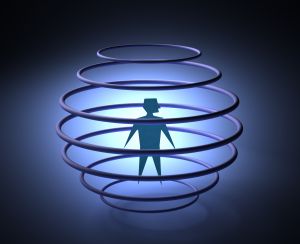Stimulants and Sham Reward
I used to believe that my brain was my most important organ - until I realized who was telling me that.
— Emo Phillips
Positive reinforcement is intrinsically corrupting. The more reinforcing a stimulus is the more a person is willing to sacrifice to re-experience it. Cocaine and amphetamine are the most reinforcing stimuli known. They activate biological mechanisms directly, and thereby produce greater reinforcement than do other stimuli, including: good food, sex, the arts, financial success, and even loved ones.
It generally takes 2 to 4 years between the initial exposure to the stimulant and the development of addiction. Only about 10-15% of those who experiment with these drugs intra-nasally become addicted. Those who do, typically develop a transition to high-dose, long-duration bingeing characterized by repeated re-administrations during which the drug is the focus of attention to the complete exclusion of everything else.1
Repeated drug exposure has long term consequences for the nervous system. Drug tolerance one example of a neuroadaptation in which a progressively greater dose of the drug is required to achieve the same effect. Tolerance is generally reversible with extended abstinence.
More sinister is sensitization, which refers to increasing sensitivity to certain drug effects with repeated doses, and may be partially irreversible. Sensitization is thought to be responsible for the development of the compulsive aspect stimulant addiction, and so is responsible for sham reward.
Sensitization is more likely to occur with intermittent dosing, while tolerance is more likely to occur with steady dosing.In contrast to the steady pattern of consumption that characterize alcohol and opiate use, an intermittent pattern of consumption is more typical among stimulant abusers. The absence of daily use does not indicate decreased compulsion. In fact intermittent use appears to increase the compulsion to use the drug!
Sham Reward
Veteran cocaine, amphetamine, and nicotine users can recount all of the negative consequences of continued drug use [some of which can be quite frightening], deplore their situation, report that the drug does not continue to give great pleasure, yet their motivation to get and consume the drug continues to increase over time.
Question: Why do stimulant abusers show increasing motivation to consume the drug when they receive decreasing pleasure from it?
Answer: Drug use is primarily motivated by reinforcement not by reward.
Reward [an outcome that feels good] and reinforcement [an outcome that increases the likelihood of repeating the behavior that produced it] are different, and are mediated by different biological processes. We generally think of them as the same, because they are so highly correlated. At first, cocaine and stimulant consumption produce both reward [pleasure] and reinforcement [the likelihood of doing it again]. Unfortunately, the pleaure is subject to tolerance, and the motivation to administer the drug again is subject to sensitization.
Practice teaches us how to perform a behavior, reinforcement teaches us to want to perform it. Reinforcement affects motivation via changes in the concentration of certain neurotransmitters - notably dopamine [DA] - in certain parts of the brain [the nucleus accumbens has been the focus of much recent research].2 Amphetamine stimulates the release of DA, while cocaine prevents the re-uptake of DA. The consumption of either drug produces a greater saturation at DA receptor sites than could ever be achieved by natural reward.
Reinforcement is highly correlated with reward, and it had been assumed that they were identical. In fact, these are two important and distinct phenomena of the psyche. Specifically: the biological reaction to stimulant use changes the meaning of drug related stimuli in two ways:
- As a result of reward, stimuli associated with the act or place of drug produce desire [expectation of pleasure].
- As a result of reinforcement, these stimuli become more salient [brighter, more attractive].
Salience refers to the ability of a stimulus to capture attention, and results from sensitization of certain neural systems in which DA is the primary neurotransmitter. Salience develops without conscious awareness of the process, so the addict is only aware of the subjective result: drug-related stimuli become brighter and more attractive. As a result of repeated exposure to extraordinarily powerful reinforcers, the brains of chronic stimulant users changes in ways that may be only partially reversible. For the remainder of the user’s life, random encounters with the sight, smell, or even thoughts of the drug are capable of eliciting a chain of events that result in relapse.
It's a shame, because the reward is a sham. Addicts sell out everything in their selfish pursuit of reward, but it doesn't work. Repeated administrations of stimulants do not produce more pleasure, they produce less! Veteran users can recount all of the negative consequences of continued drug use [some of which can be quite frightening], deplore their situation, and report that the drug does not continue to give great pleasure. Then, why don’t they stop?
The compulsion to use Cocaine, Methamphetamine, and other stimulants results from an acquired Obsessive Compulsive Disorder [OCD]. Repeated exposure to powerful reinforcers produce changes in the psyche that mimic OCD3. An individual born with OCD may perform a complex checking ritual. The behavior is motivated not by the expectation of a pleasurable outcome, but by a seemingly irresistible urge to perform the behavior. For veteran drug abusers, it is not the expectation of reward [pleasure] that motivates them to continue to use the drug, but a biologically based compulsion that has been acquired as a result of many exposures to extraordinarily powerful chemical reinforcement.
Behavior driven by the expectation of reward looks the same to an outside observer as behavior driven by a mindless compulsion. But the experience of engaging in rewarding behavior is quite different from the experience of mindlessly performing compulsive behavior. This web site contains tools that will help in selecting and maintaining a Path of Greater Advantage.
Footnotes:
1.Gawin, F. Cocaine Addiction: Psychology and Neurophysiology. Science, 1991, 251, 1580-1586
2. Berridge & Robinson, Current Directions in Psychological Science, 1995. 4, 71-76
3. Ibid.
